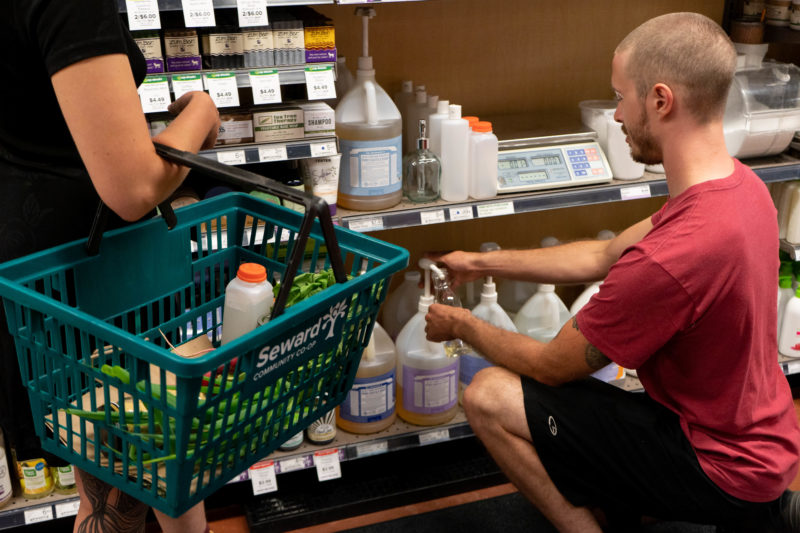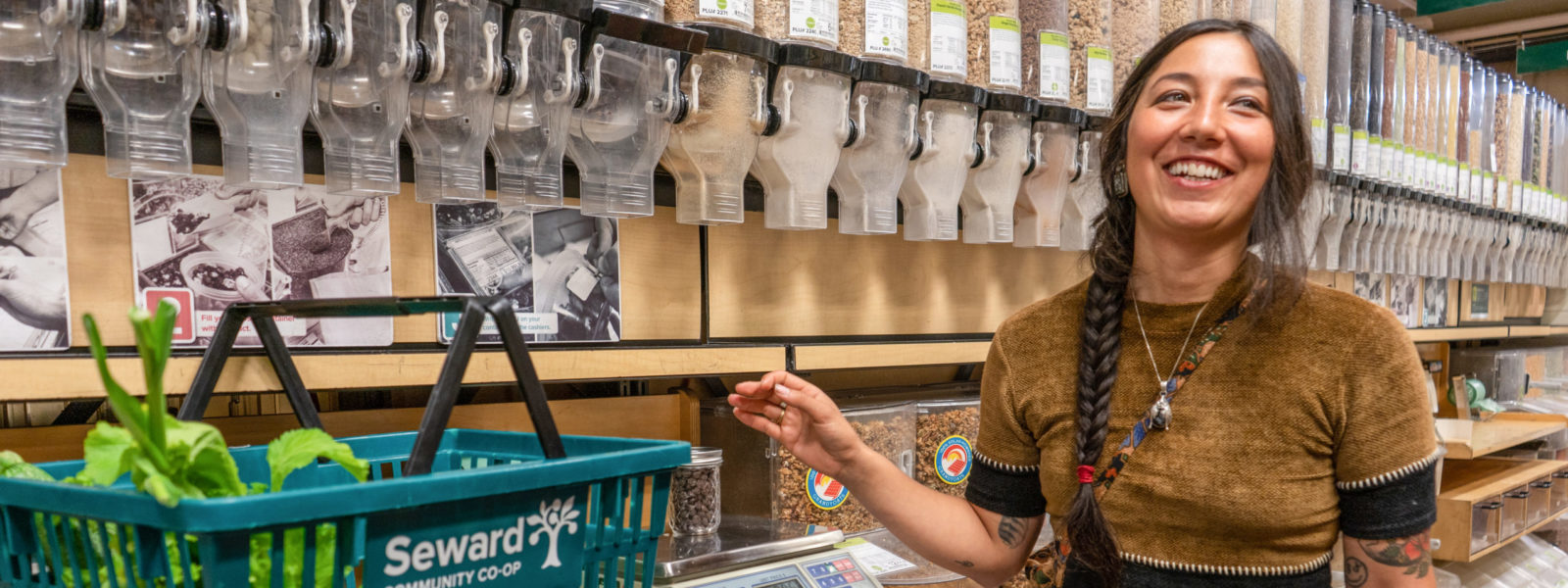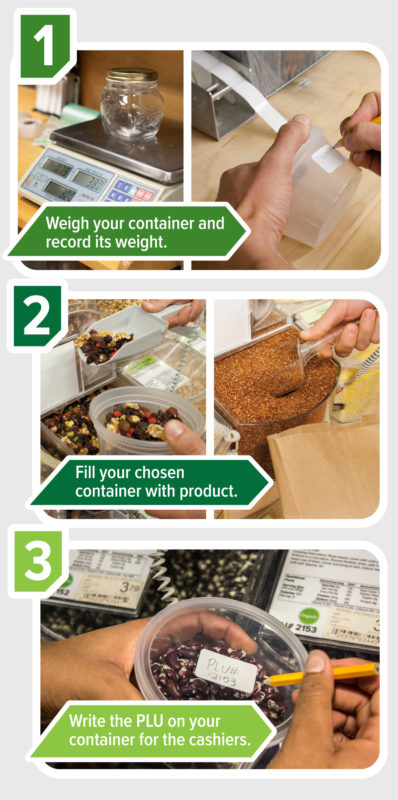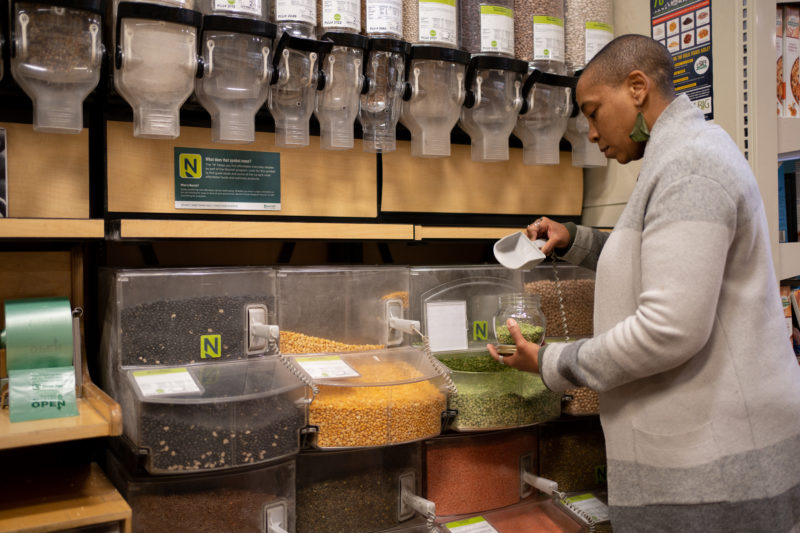For many, browsing through the Bulk aisles is a typical part of a Seward Co-op visit. All the possibilities of what can be made come to mind when walking among the dispensers and jars full of pasta, popcorn, breadcrumbs, vanilla, nutritional yeast, and so much more. For others, however, shopping bulk is less familiar. Where do you start? How does measuring work? What can you do with many of the offerings? While it may feel a bit intimidating for newcomers to start shopping the Bulk aisles, buying in bulk is, in fact, simple, cost-effective, and better for the environment than buying many prepackaged goods. Let’s take a closer look.
 Did you know that back in 1972, Seward Co-op offered mostly bulk pantry staples? Now, more than 50 years later, we continue the tradition of selling bulk items all across our stores, from fresh herbs, celery, and Brussels sprouts in Produce to soaps and bath salts in Wellness (bulk Wellness are included on Wellness Wednesdays!) to eggs, dried goods, and household cleaners in Grocery. Shopping Bulk has the wonderful effect of reducing not only packaging waste (read more about Seward Co-op’s efforts to help reduce packaging waste and to offer reusable Deli containers) but also to reduce food waste, as you only have to purchase what you need. This makes shopping for your staples more cost-effective, so you only pay for what you intend to use, and no more. So how does buying in bulk work? Brussels sprouts and mushrooms are rather straightforward to purchase: grab a compostable or paper bag and scoop in however many you need to be weighed at the register. But what about items like coconut shavings or honey? The following steps will help with buying everything from flour, to cinnamon, to hand soap, and more.
Did you know that back in 1972, Seward Co-op offered mostly bulk pantry staples? Now, more than 50 years later, we continue the tradition of selling bulk items all across our stores, from fresh herbs, celery, and Brussels sprouts in Produce to soaps and bath salts in Wellness (bulk Wellness are included on Wellness Wednesdays!) to eggs, dried goods, and household cleaners in Grocery. Shopping Bulk has the wonderful effect of reducing not only packaging waste (read more about Seward Co-op’s efforts to help reduce packaging waste and to offer reusable Deli containers) but also to reduce food waste, as you only have to purchase what you need. This makes shopping for your staples more cost-effective, so you only pay for what you intend to use, and no more. So how does buying in bulk work? Brussels sprouts and mushrooms are rather straightforward to purchase: grab a compostable or paper bag and scoop in however many you need to be weighed at the register. But what about items like coconut shavings or honey? The following steps will help with buying everything from flour, to cinnamon, to hand soap, and more.


